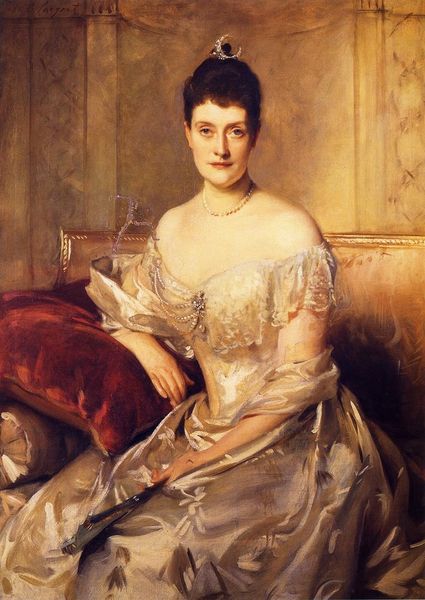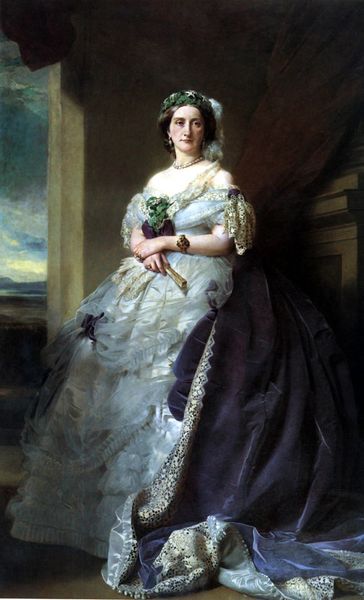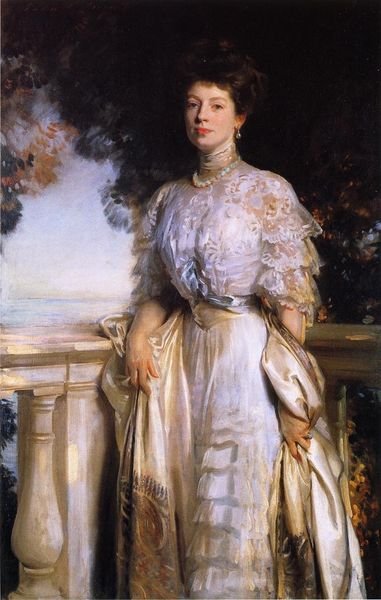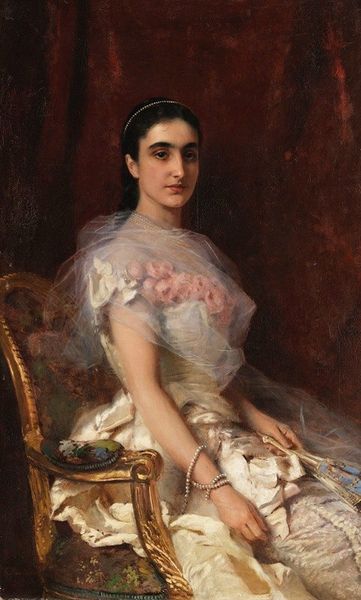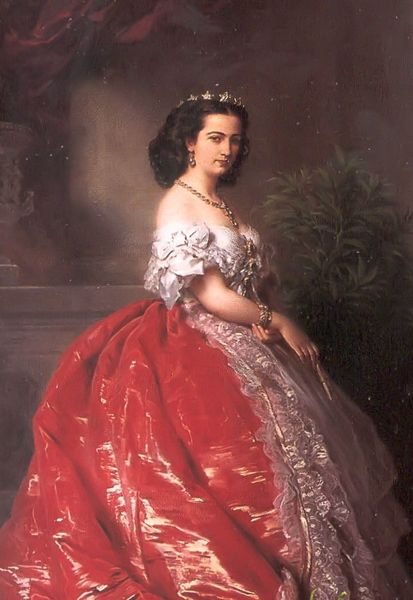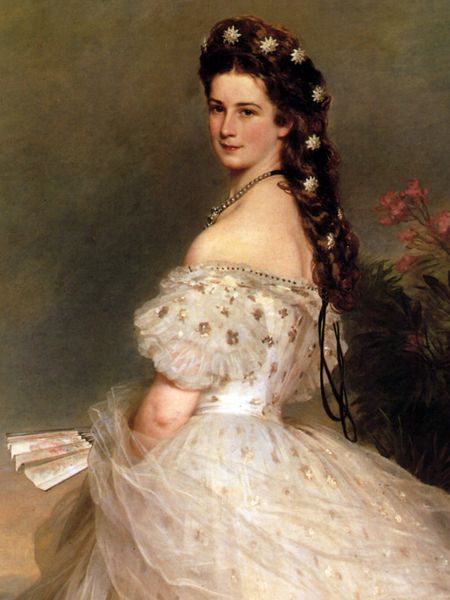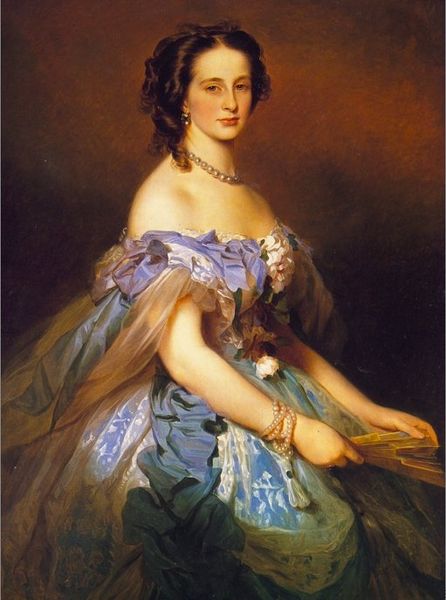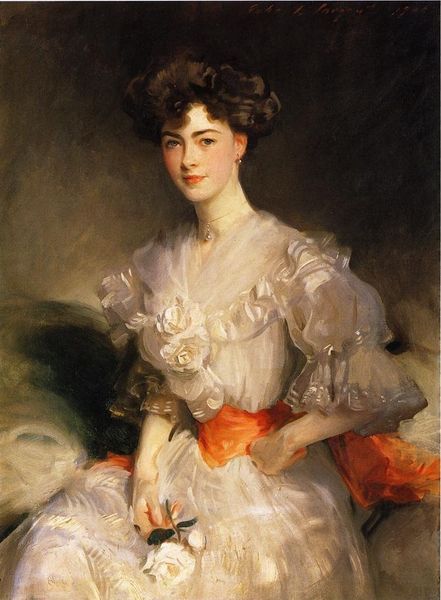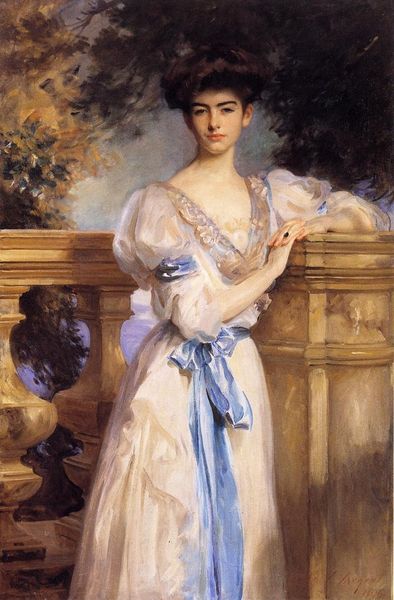
Copyright: Public domain
Editor: We’re looking at “Marquise De Louvencour,” painted in 1860 by Gustaf Wappers. It's an oil painting, and there's something about her gaze... it feels very direct, almost challenging. The frills and lace of the dress contrast sharply with that intense look. What do you see when you look at this portrait? Curator: You know, what strikes me is the quiet rebellion simmering beneath all that frilly white. It's a Romantic era portrait, supposedly about idealised beauty, but there’s a worldliness in her eyes, wouldn’t you agree? Like she’s seen something. She holds a delicate fan and those little purple blooms like they’re precious secrets. I bet you this was no mere society beauty – I imagine her whispering dangerous political theories over tea. The light is warm on her face and makes the edges almost imperceptible. Almost as if the figure blends into the background. Editor: That’s fascinating! I hadn't considered a rebellious angle. I was more caught up in the, well, the frilliness of it all! All that lacy fabric! But rebellion… you see it in the eyes, right? Curator: Exactly! That gaze! The Romantic period had an interest in capturing emotional intensity. The interesting aspect about this intensity is that you would see them in paintings depicting war. This looks more like she knows the war, she survived it. Perhaps Wappers subtly capturing something deeper. Like, do we ever truly see the whole story in a portrait, or just what the artist *wants* us to see? Editor: I suppose we’re both bringing our own perspectives to it, like layers of interpretation. So a painting isn't just a surface thing. Curator: Never is. Like people, paintings carry stories that shimmer and evolve each time we look at them, wouldn't you agree? Always a pleasure!
Comments
No comments
Be the first to comment and join the conversation on the ultimate creative platform.



